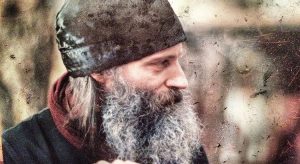 Never has there been such an age of false teachers as this pitiful twentieth century, so rich in material gadgets and so poor in mind and soul. Every conceivable opinion, even the most absurd, even those hitherto rejected by the universal consent of all civilized peoples — now has its platform and its own ‘teacher.’ A few of these teachers come with demonstration or promise of ‘spiritual power’ and false miracles, as do some occultists and ‘charismatics’; but most of the contemporary teachers offer no more than a weak concoction of undigested ideas which they receive ‘out of the air,’ as it were, or from some modern self-appointed ‘wise man’ (Or woman) who knows more than all the ancients merely by living in our ‘enlightened’ modern times. As a result, philosophy has a thousand schools, and ‘Christianity’ a thousand sects. Where is the truth to be found in all this, if indeed it is to found at all in our most misguided times?
Never has there been such an age of false teachers as this pitiful twentieth century, so rich in material gadgets and so poor in mind and soul. Every conceivable opinion, even the most absurd, even those hitherto rejected by the universal consent of all civilized peoples — now has its platform and its own ‘teacher.’ A few of these teachers come with demonstration or promise of ‘spiritual power’ and false miracles, as do some occultists and ‘charismatics’; but most of the contemporary teachers offer no more than a weak concoction of undigested ideas which they receive ‘out of the air,’ as it were, or from some modern self-appointed ‘wise man’ (Or woman) who knows more than all the ancients merely by living in our ‘enlightened’ modern times. As a result, philosophy has a thousand schools, and ‘Christianity’ a thousand sects. Where is the truth to be found in all this, if indeed it is to found at all in our most misguided times?
In only one place is there to be found the fount of true teaching, coming from God Himself, not diminished over the centuries but ever fresh, being one and the same in all those who truly teach it, leading those who follow it to eternal salvation. This place is the Orthodox Church of Christ, the fount is the grace of the All-Holy Spirit, and the true teachers of the Divine doctrine that issues from this fount are the Holy Fathers of the Orthodox Church.
+ Fr. Seraphim Rose (1934-1982)
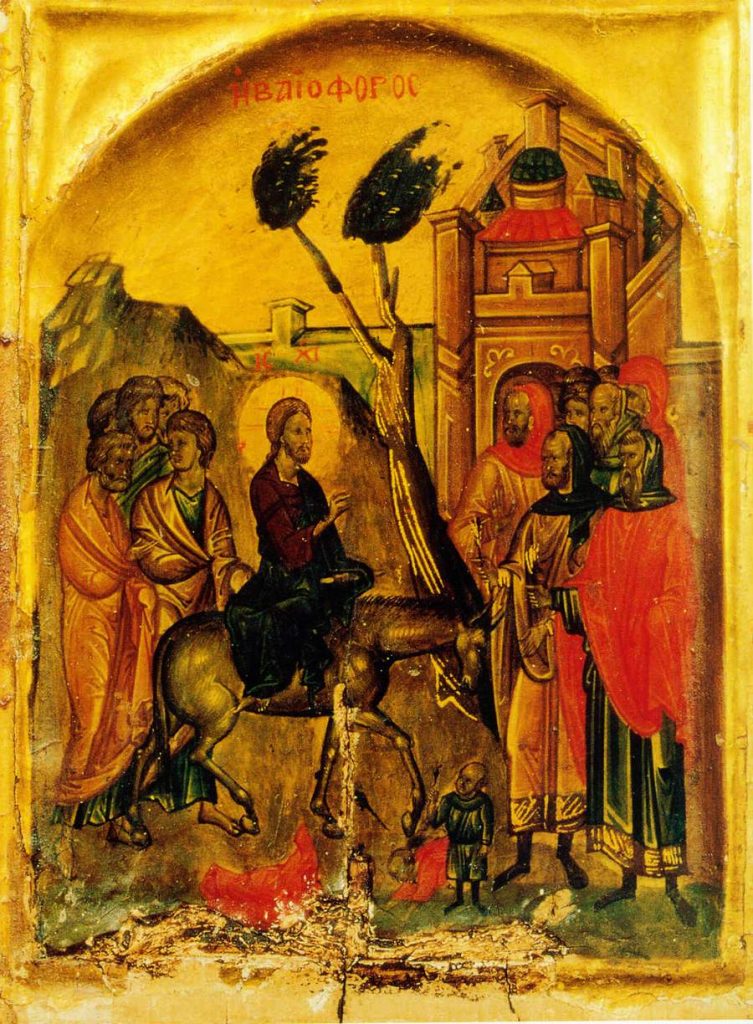

 The great Stefan Nemanja, whose authorative words everyone unconditionally heeded to and at whom people and emperors trembled, became a monk and served the monks of the Holy Mountain [Athos] as an ideal example of meekness, humility, goodness and piety. Even his death was the death of a truly godly-man and spiritual leader. He became bedridden on February 7. He summoned St. Sava, placed his hands on him and blessed him saying: “My beloved child, the light of my eyes, comfort and protector in my old age! Behold the time of our separation has arrived. Behold the Lord is releasing me in peace. But you, my child, do not mourn because of our separation. For parting is the common cup of all and everyone; here we part from one another but we will meet there where there is no separation.” On February 12, St. Simeon asked Sava to clothe him in a burial cassock, to spread a mat on the ground, lay him there and place a stone under his head. He then summoned all the monks and asked their forgiveness. At dawn, on February 13, while the monks were chanting the Office of Matins in church and the voices were reaching the cell of the dying one, St. Simeon, once more his face radiated and he gave up his soul to his God.
The great Stefan Nemanja, whose authorative words everyone unconditionally heeded to and at whom people and emperors trembled, became a monk and served the monks of the Holy Mountain [Athos] as an ideal example of meekness, humility, goodness and piety. Even his death was the death of a truly godly-man and spiritual leader. He became bedridden on February 7. He summoned St. Sava, placed his hands on him and blessed him saying: “My beloved child, the light of my eyes, comfort and protector in my old age! Behold the time of our separation has arrived. Behold the Lord is releasing me in peace. But you, my child, do not mourn because of our separation. For parting is the common cup of all and everyone; here we part from one another but we will meet there where there is no separation.” On February 12, St. Simeon asked Sava to clothe him in a burial cassock, to spread a mat on the ground, lay him there and place a stone under his head. He then summoned all the monks and asked their forgiveness. At dawn, on February 13, while the monks were chanting the Office of Matins in church and the voices were reaching the cell of the dying one, St. Simeon, once more his face radiated and he gave up his soul to his God.
 Saint John bore witness of Christ Jesus, that He is in truth The Lamb of God who takes away the sin of the world (John 1:29), that He is the promised Deliverer, awaited by all. Those who were near him heard this and believed. From them this witness passed on to the people, and everyone began to think that he of whom John bore witness was not an ordinary man. The Saviour pointed this out when in the last days in the temple, he proposed to the heads of the temple a question: the baptism of John, was it from heaven or of men (Mark 11:30)?
Saint John bore witness of Christ Jesus, that He is in truth The Lamb of God who takes away the sin of the world (John 1:29), that He is the promised Deliverer, awaited by all. Those who were near him heard this and believed. From them this witness passed on to the people, and everyone began to think that he of whom John bore witness was not an ordinary man. The Saviour pointed this out when in the last days in the temple, he proposed to the heads of the temple a question: the baptism of John, was it from heaven or of men (Mark 11:30)?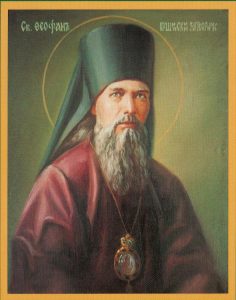 They refrained from answering, because it was impossible for them not to see that John came baptizing with water not of himself. But if they were to say this, they would immediately have to acknowledge John’s testimony that the Promised One was before them, and therefore be compelled to submit to His teaching. But they did not want to submit, not for any well-founded reasons, but solely because of their prejudice. But their obstinacy does not in the least lessen the power of the witness of St. John. To this day, it is as certain as it was when it came forth from his mouth. We hearken unto John who shows us the true Deliverer; and through this we enliven our faith, as a faith which has tangible proof behind it.
They refrained from answering, because it was impossible for them not to see that John came baptizing with water not of himself. But if they were to say this, they would immediately have to acknowledge John’s testimony that the Promised One was before them, and therefore be compelled to submit to His teaching. But they did not want to submit, not for any well-founded reasons, but solely because of their prejudice. But their obstinacy does not in the least lessen the power of the witness of St. John. To this day, it is as certain as it was when it came forth from his mouth. We hearken unto John who shows us the true Deliverer; and through this we enliven our faith, as a faith which has tangible proof behind it.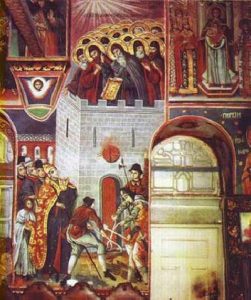 When Emperor Michael Palaeologus contracted the infamous Union of Lyons with the pope, in order to obtain help from the West against the Bulgarians and Serbs, the monks of the Holy Mountain sent a protest to the emperor against this Union, imploring him to reject it and return to Orthodoxy. The pope dispatched an army to help the emperor. The Latin army entered the Holy Mountain and committed such barbarism as the Turks had never committed in five hundred years. Having hanged the Protaton, and having killed many monks in Vatopedi, Iveron and other monasteries, the Latins attacked Zographou. The blessed Abbot Thomas warned the brethren that whoever wished to be spared from the Latins should flee from the monastery, and that whoever desired a martyr’s death should remain.
When Emperor Michael Palaeologus contracted the infamous Union of Lyons with the pope, in order to obtain help from the West against the Bulgarians and Serbs, the monks of the Holy Mountain sent a protest to the emperor against this Union, imploring him to reject it and return to Orthodoxy. The pope dispatched an army to help the emperor. The Latin army entered the Holy Mountain and committed such barbarism as the Turks had never committed in five hundred years. Having hanged the Protaton, and having killed many monks in Vatopedi, Iveron and other monasteries, the Latins attacked Zographou. The blessed Abbot Thomas warned the brethren that whoever wished to be spared from the Latins should flee from the monastery, and that whoever desired a martyr’s death should remain. 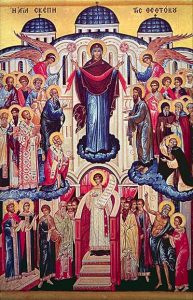 From time immemorial, the Church has celebrated the Most-holy Theotokos as the patroness and protectress of the Christian people, who, by her intercessory prayers, implores God’s mercy for us sinners. The help of the Most-holy Mother of God has been clearly shown numerous times, to individuals and to nations, in peace and in war, in monastic deserts and in densely populated cities. The event that the Church commemorates and celebrates today confirms the Theotokos’ consistent protection of Christian people. On October 1, 911, during the reign of Emperor Leo the Wise, there was an All-night Vigil in the Blachernae Church of the Mother of God in Constantinople. The church was full of people. St. Andrew the Fool-for-Christ was standing in the rear of the church with his disciple Epiphanius. At four o’clock in the morning, the Most-holy Theotokos appeared above the people, holding her omophorion outstretched as a protective covering for the faithful. She was clothed in gold-encrusted purple, and shone with an ineffable radiance, surrounded by apostles, saints, martyrs and virgins.
From time immemorial, the Church has celebrated the Most-holy Theotokos as the patroness and protectress of the Christian people, who, by her intercessory prayers, implores God’s mercy for us sinners. The help of the Most-holy Mother of God has been clearly shown numerous times, to individuals and to nations, in peace and in war, in monastic deserts and in densely populated cities. The event that the Church commemorates and celebrates today confirms the Theotokos’ consistent protection of Christian people. On October 1, 911, during the reign of Emperor Leo the Wise, there was an All-night Vigil in the Blachernae Church of the Mother of God in Constantinople. The church was full of people. St. Andrew the Fool-for-Christ was standing in the rear of the church with his disciple Epiphanius. At four o’clock in the morning, the Most-holy Theotokos appeared above the people, holding her omophorion outstretched as a protective covering for the faithful. She was clothed in gold-encrusted purple, and shone with an ineffable radiance, surrounded by apostles, saints, martyrs and virgins. 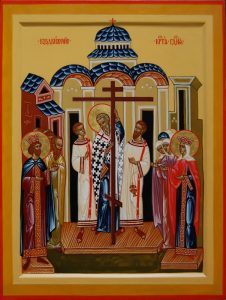 “Let us not then be ashamed to confess the Crucified. Be the Cross our seal made with boldness by our fingers on our brow, and on everything; over the bread we eat, and the cups we drink; in our comings in, and goings out; before our sleep, when we lie down and when we rise up; when we are in the way, and when we are still. Great is that preservative; it is without price, for the sake of the poor; without toil, for the sick; since also its grace is from God. It is the Sign of the faithful, and the dread of devils…”
“Let us not then be ashamed to confess the Crucified. Be the Cross our seal made with boldness by our fingers on our brow, and on everything; over the bread we eat, and the cups we drink; in our comings in, and goings out; before our sleep, when we lie down and when we rise up; when we are in the way, and when we are still. Great is that preservative; it is without price, for the sake of the poor; without toil, for the sick; since also its grace is from God. It is the Sign of the faithful, and the dread of devils…” Never has there been such an age of false teachers as this pitiful twentieth century, so rich in material gadgets and so poor in mind and soul. Every conceivable opinion, even the most absurd, even those hitherto rejected by the universal consent of all civilized peoples — now has its platform and its own ‘teacher.’ A few of these teachers come with demonstration or promise of ‘spiritual power’ and false miracles, as do some occultists and ‘charismatics’; but most of the contemporary teachers offer no more than a weak concoction of undigested ideas which they receive ‘out of the air,’ as it were, or from some modern self-appointed ‘wise man’ (Or woman) who knows more than all the ancients merely by living in our ‘enlightened’ modern times. As a result, philosophy has a thousand schools, and ‘Christianity’ a thousand sects. Where is the truth to be found in all this, if indeed it is to found at all in our most misguided times?
Never has there been such an age of false teachers as this pitiful twentieth century, so rich in material gadgets and so poor in mind and soul. Every conceivable opinion, even the most absurd, even those hitherto rejected by the universal consent of all civilized peoples — now has its platform and its own ‘teacher.’ A few of these teachers come with demonstration or promise of ‘spiritual power’ and false miracles, as do some occultists and ‘charismatics’; but most of the contemporary teachers offer no more than a weak concoction of undigested ideas which they receive ‘out of the air,’ as it were, or from some modern self-appointed ‘wise man’ (Or woman) who knows more than all the ancients merely by living in our ‘enlightened’ modern times. As a result, philosophy has a thousand schools, and ‘Christianity’ a thousand sects. Where is the truth to be found in all this, if indeed it is to found at all in our most misguided times?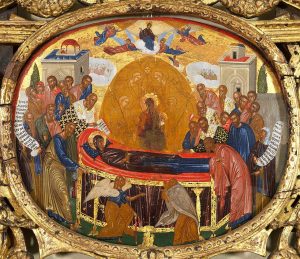
 Forty days before He was delivered to an ignominious death for our sins, our Lord revealed to three of His disciples the glory of His Divinity.
Forty days before He was delivered to an ignominious death for our sins, our Lord revealed to three of His disciples the glory of His Divinity.